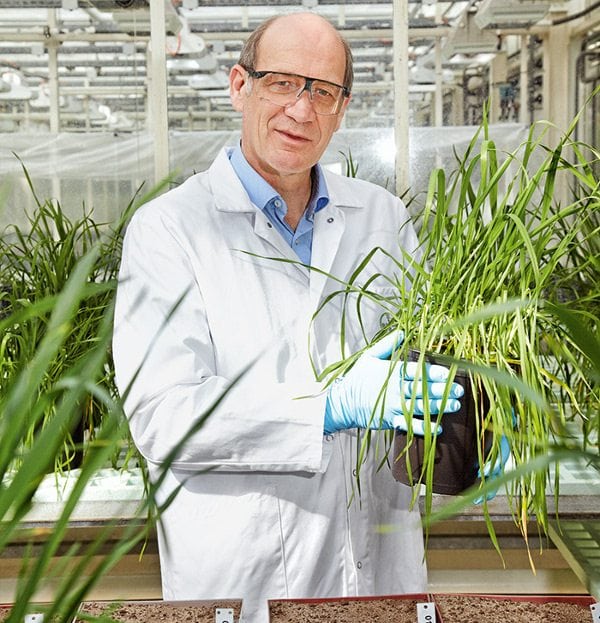Both Csaba Csorba of Bayer Hungary and Steve Patterson, Manager for Cereals at Bayer’s Crop Science Division in Monheim, Germany are seeking solutions that enable the sustainable and healthy growth of crops, especially cereals.
What are the main challenges your Hungarian customers, seed treaters but also growers, face every day, Csaba?
Csaba Csorba: The first problem that they have to master is the composition of different recipes for different crops. A lot of crops are treated in Hungary and all these require different recipes of products, stickers, coloring agents, and other materials. To find the right composition for each machine and situation, this is when they are looking for help. The second is quality of the treatment. So when the treatment is done, they are looking for good coverage on the seeds and they are very unhappy if the seeds are patchy, because they want to give their customers the best-colored seeds possible, and here we can also provide them with solutions.
When you meet your customers, would you say that dust occurring during seed treatment is an issue for them?
Csaba Csorba: Yes, the question of dust and the rubbing off is definitely a challenging issue for some of my customers. So basically to find out the right technology of applying, mixing, and then drying the seeds after treatment and application of the product is the question, which is a very sensitive one. Because if you don’t pay attention to this part, you can rub off crop protection products from the seed, and basically this is not good for the environment – and in addition you are burning money. It is our task to help them master their various challenges to get high-quality treated seeds in the end.
But what does this support look like in practice?
Csaba Csorba: From the Bayer SeedGrowth® side we have seed coatings and sticking agents, the Peridiam® range of our products, which not only give the seed a better color, but also help the active ingredients stick to the surface of the seeds much better, so the farmers have no loss of active ingredients. In case of dust, we can offer them seed coatings. As a result, emissions can be reduced by up to 95 % so everyone involved in seed treatment is better protected, and the active ingredients stay on the seed.
Let’s talk about wheat, which is the largest arable crop in the world by area, and thus also one of Hungary’s most important crops: would you say that the production of wheat is changing or has to change?
Csaba Csorba: I can only speak for the Hungarian market, where we have a slight change because the production of wheat is intensifying. We see this from the amount of applied plant protection products and also in the area of seed treatment, where more and more insecticide treatments for cereals are used. But the amount of seed drilled per hectare is decreasing. There has been a trend for five to six years now; new varieties of wheat are introduced that require fewer seeds per hectare, because they tiller much more easily than old varieties. But if you have fewer seeds sown per hectare, you need better protection not only against fungi but also against insects. And the market for these seed treatment products – combined fungicides and insecticides – is increasing here.
Steve Patterson: From a global perspective, the trend-line growth in wheat demand is not being met by production, so the need to develop new technology to increase yield and quality has never been greater. At the same time, the pressures on production from climate change will only increase this challenge. That is why we work to contribute to developing sustainable solutions which enable growth in production and quality while addressing the agronomic challenges faced by farmers.
Feeding a growing world population is one of today’s most important challenges: how can we ensure a sustainable intensification of wheat production?
Steve Patterson: There are a number of ways we can achieve this and make a meaningful contribution. Firstly, we can provide products and agronomic support to help farmers exploit today’s technology and achieve the highest, most efficient production and quality. Secondly, we can invest in and develop new technology to increase the intrinsic yield level for cereals, for example the development of hybrid wheat and new traits, and new agronomy solutions to protect that yield and overcome challenges of disease and weed resistance or the impact of climate change, heat, and drought as an example.
What role does research play here?
Steve Patterson: All of these areas are being addressed in our research targets. We are increasingly bringing together our multidisciplinary research teams and addressing the challenge of yield and quality by considering the inputs and contributions from breeding, trait research, crop protection, and biologics in an integrated way that we believe can provide greater opportunity for breakthrough. This is what we see as our support of and contribution to sustainable intensification of wheat production.
Source: Bayer Seed Growth










